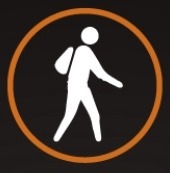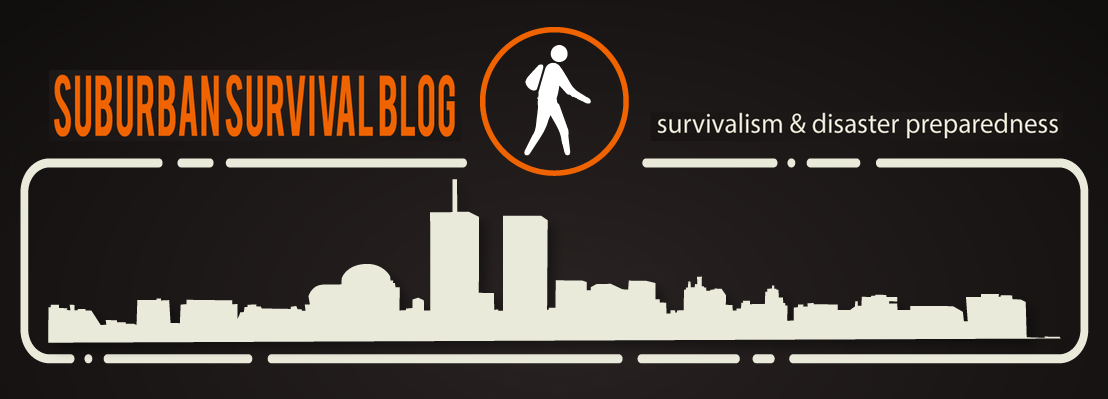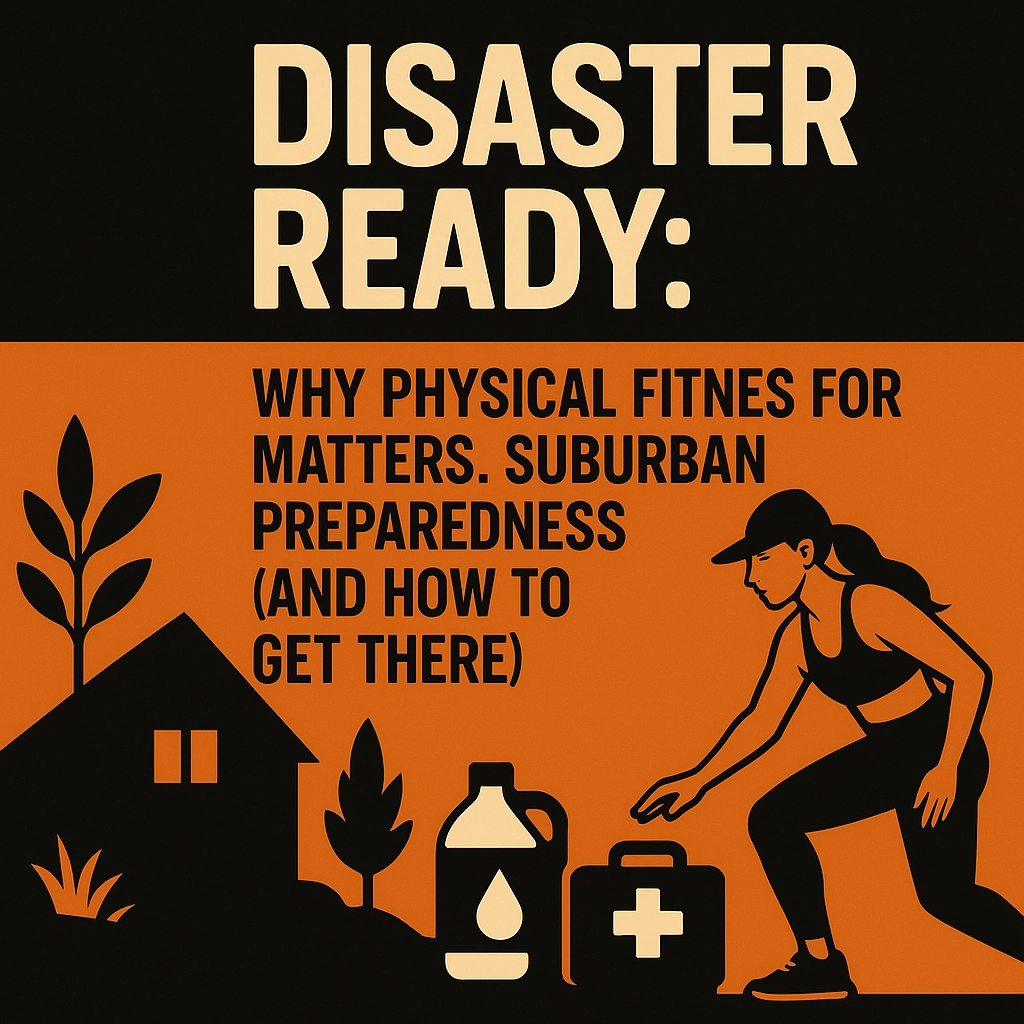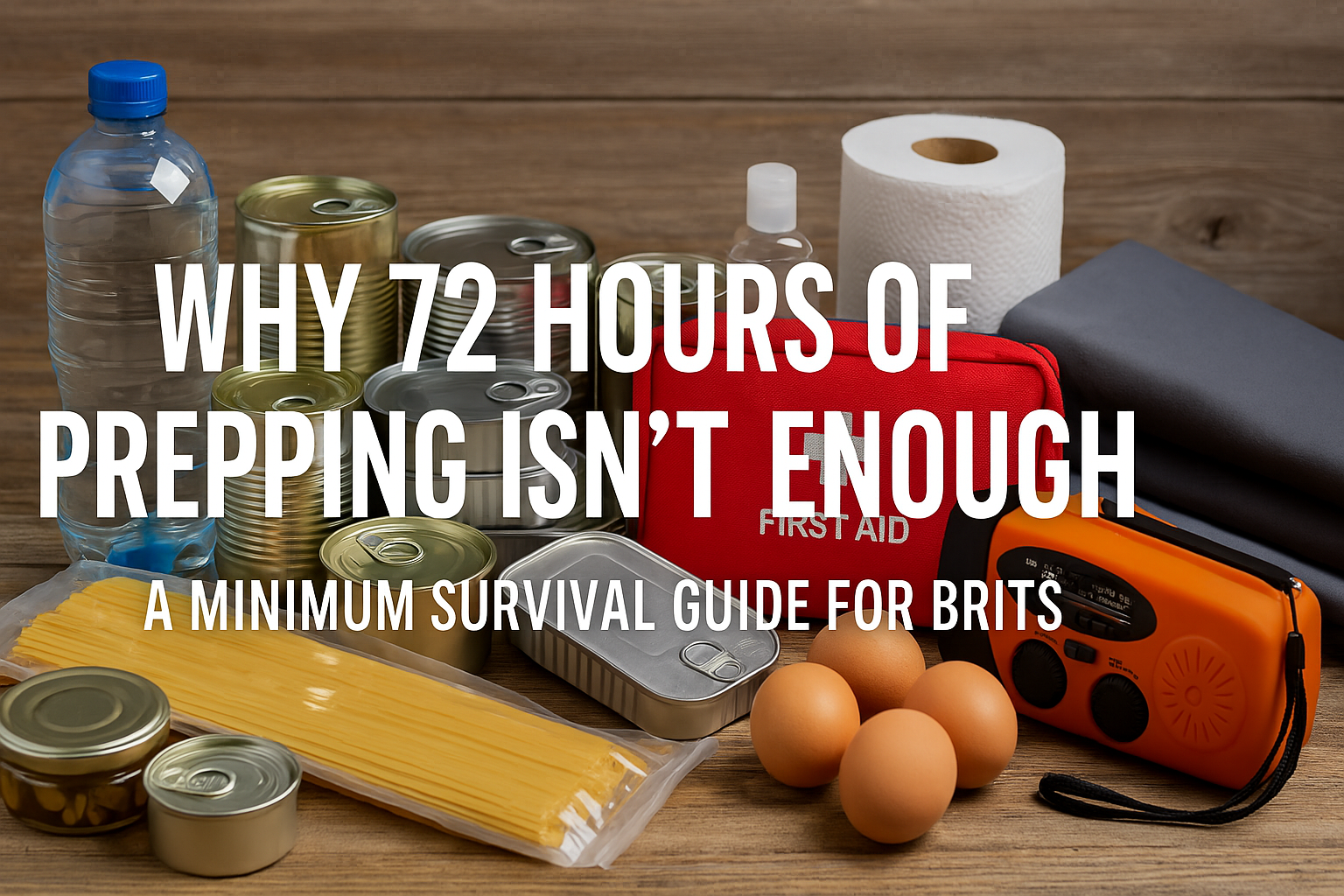 This was originally published on 05/2004 by someone else, somewhere else, and I copied and pasted it to a word document for my own personal reference. It goes into the states of awareness that I think all suburbanites should be aware of when making through their day in the suburbs or the city. It is pretty long, but take a read below, it is pretty good… I thought I would share this as I was recently reviewing it again for myself.
This was originally published on 05/2004 by someone else, somewhere else, and I copied and pasted it to a word document for my own personal reference. It goes into the states of awareness that I think all suburbanites should be aware of when making through their day in the suburbs or the city. It is pretty long, but take a read below, it is pretty good… I thought I would share this as I was recently reviewing it again for myself.
States of Awareness, the Cooper Color Codes
www.rangesmaster.comMost people stumble through life, blissfully unaware of the world around them. They remain preoccupied with thoughts of work, or personal problems, or how to get a date, or other trivialities, with no thought to their immediate environment. By not paying attention to their surroundings, they place themselves in needless jeopardy.
Go sit in the intake area in your neighborhood hospital emergency room one evening, as an educational exercise. Observe the unfortunates who come in for treatment, and you will get an excellent illustration of this point. About twenty percent of the customers are actually sick-discount them. The remaining eighty percent are there because they were inattentive to their environment. These will be people who walked off loading docks, or stepped off ladders twenty feet up, or backed into running machinery, or stepped into the path of a vehicle, OR allowed a thug to walk right up to them un-noticed and bean them with a brick. You can be stupid, inattentive, and oblivious in your work environment day in and day out and get away with it until one day the odds catch up with you and you are injured. The same applies on the street. You can be stupid, inattentive, and oblivious and get away with it until your path happens to cross the path of a criminal. The vast majority of criminals are opportunists, who only strike when presented with a viable opportunity. Remove the opportunity and you remove the risk to you!
By learning to observe your environment, constantly evaluate it, and react appropriately to what you see, you can achieve a large degree of control over your fate. This requires you to learn to shift up and down a scale of readiness, just like shifting gears in a car, so that you can match your level of awareness/readiness with the current requirements of your situation. In a car, you shift gears based on the grade encountered or the speed desired. On the street, you must learn to “shift gears” mentally, to match the threat level encountered. There is a sliding scale of readiness, going from a state of being oblivious and unprepared to a condition of being ready to instantly do lethal violence if forced. One cannot live stuck at either end of this spectrum.
If you try to live at the bottom of the scale, you will fall victim to an accident or to a criminal, eventually. It’s just a matter of “when”, not “if”. On the other hand, you can’t go through your daily routine with your hand hovering over your holstered pistol, ready to shoot if anything moves! What you must learn to do is escalate and de-escalate up and down this scale as the circumstances around you dictate. This is an easily learned system, and one that will help you be in the right frame of mind to deal with any conflict you encounter.
If you should find yourself faced with a life-threatening attack by a criminal, as a typical normal person, you will be faced by three enormous difficulties. They are:
- Recognizing the presence of the predator in time;
- Realizing, internalizing, and accepting that THAT MAN, RIGHT THERE, is about to kill you for reasons you do not understand; if you don’t stop him; and
- Overcoming your reluctance to do lethal violence against a fellow human being.
Let’s look at each of these in turn. First, you have to see him and realize that he is a threat. Thugs are flesh and bone, and are not invisible. Contrary to public opinion, they do not beam down from the mother ship, attack you, and beam back up. They typically walk right up to you un-noticed because of the fog most people operate in daily. Learn to lift that fog and see the warning signs earlier, so you can be prepared.
Second, it is very difficult for normal, rational, socialized, civilized people to grasp that they live cheek by jowl with people who are NOT normal, rational, socialized, or civilized. There are people out there who do not care about your hopes or plans for the future, they do not care about your family, they do not care about the pain and suffering they inflict-they just don’t care. They may kill you for the contents of your wallet, so they can buy one more day’s supply of drugs. They may rape you because they feel powerless, degraded, and abused except while they are degrading and abusing someone else. They may kill you simply to move up one rank in their street gang. Guess what? It doesn’t matter “Why?”. A typical victim reaction is, “But why would anyone want to hurt me?”. Who cares why?
Third, it will be difficult for you to put your sights in the center of a human being’s chest and press the trigger, knowing that you are turning a vertical, living, breathing person into a horizontal pile of meat. Don’t let anyone tell you that will be easy. As a society, we don’t want it to be easy, do we? This is why legally armed citizens don’t shoot people over arguments, or traffic accidents, and so forth. In fact, shootings by armed citizens are almost always ruled justifiable by the authorities, while almost a third of police shootings are ruled questionable or improper. Private citizens are reluctant to actually shoot, even when it is necessary. You must overcome this obstacle if your life is on the line. You will have to realize that there are times when lethal violence is not just excusable, or justifiable, or acceptable, but actually required.
Fortunately, there is a system available to help you overcome all three of these problems. By learning to use this system, practicing it, and making it part of your daily routine, you can be assured of seeing an attack in its developing stages, and become both mentally and physically prepared to defend yourself. Jeff Cooper, who taught it at ‘Gunsite’ and later gave an excellent videotaped presentation, first publicized this system, called the Color Code. I had the great good fortune of being taught this by Jeff early in my career, and I can say without reservation that this system saved my life on several occasions. Not what kind of gun I had, nor the brand of ammo, but this mental system. I feel so strongly that this is one of the most important weapons in your arsenal, that I feel it is my duty to share it with you.
I mentioned earlier learning to move up and down a scale of readiness, just like shifting gears. The scale consists of four mental states, which Jeff gave color names. The colors simply let us conceptualize and discuss the basic mental states. You must learn to go up and down this scale as the situation and circumstances around you change, as they invariably do as you go through your daily routine.
CONDITION WHITE - White is the lowest level on the escalator. In Condition White one is unaware, not alert, oblivious. This state can be characterized as “daydreaming” or “preoccupied”. People in White tend to walk around with their heads down, as if watching their own feet. They do not notice the impending danger until it literally has them by the throat.
You see examples of this frequently. When was the last time you saw someone in traffic roll right up to a barricade or stalled vehicle, then expect you to stop and let them into your lane? They’re operating their vehicle in Condition White. When a motorist runs over a motorcyclist and kills him, what are the first words out of their mouth? “I didn’t see him.” They’re not lying. They were so inattentive and complacent that they did not notice a 200-pound man on a four hundred pound machine right in front of them. When this same guy runs past a stop sign and broadsides your car, killing your child, he will say, “I didn’t see it.”.
These same guys will be the victims of violent crime, because the criminal targets the inattentive, the complacent, the lazy, the distracted, the preoccupied. Why? Because the criminal wants to get to him, get what he wants from him, and get away from him, without being hurt or caught. Who would be the easiest person to do that to? Someone in Condition White. I’m sure you’ve seen or read about the Miranda card police officers carry. From it they read off a suspect’s rights before questioning him. Dedicated victims carry a similar card in their pockets. If they are still alive when the police arrive, they take this card out of their pockets and read from it, as follows:
- ” Geez, it all happened so fast.
- He materialized right next to me.
- I never saw him.”.
So, when would it be acceptable to be in Condition White? When in your own home, with the doors locked, the alarm system on, and your dog at your feet. Then, you can turn off your mind, if you wish, because you have sufficient layers of protection and warning to enable you to get up, get your gear, and get your head running. If you leave your home, you leave Condition White behind. The instant you leave your home, you escalate one level, to Condition Yellow.
CONDITION YELLOW - This is a relaxed state of general alertness, with no specific focal point. You are not looking for anything or anyone in particular; you simply have your head up and your eyes open. You are alert and aware of your surroundings. You are difficult to surprise, therefore, you are difficult to harm. You do not expect to be attacked today. You simply recognize the possibility.
Here’s an excellent analogy. You are on a small naval patrol vessel in the middle of the Mediterranean. You are not at war with anyone today, so you do not expect to be attacked. You do, however, recognize the possibility, so you have your radar on twenty-four hours a day, making a continuous 360 degree sweep of the area, looking for potential problems. Suddenly, there is a blip on your radar screen. You cannot tell by looking at the small, greenish-yellow dot on the screen whether it is a good thing or a bad thing, so you ask a fighter plane to intercept the blip and check it out. If it is an Al Italia airliner a hundred miles off course, the fighter pilot will wave at it. If it’s a Libyan MIG headed toward your boat, he will shoot it down. He won’t know whether to wave or shoot until he first assesses the blip as a threat. This is exactly the same process you go through on the ground. When you leave home you turn on your radar, and it continually sweeps the area around you for potential hazards. When something catches your attention, you assess it. If it’s not a threat, dismiss it. If it is a threat, start getting ready mentally to deal with it.
Anything or anyone in your immediate vicinity that is unusual, out of place, or out of context, should be viewed as potentially dangerous, until you have had a chance to assess it. Someone who looks out of place, or someone engaged in activity that has no obvious legitimate purpose, should be looked over carefully. When your mental radar picks up on a blip, you immediately escalate one level on the scale, to Condition Orange.
CONDITION ORANGE - This is a heightened state of alertness, with a specific focal point. The entire difference between Yellow and Orange is this specific target for your attention. Your focal point is the person who is doing whatever drew your attention to him. It might be the fact that he is wearing a field jacket in August. It might be that he’s standing by a column in the parking garage, instead of going into the building, or getting in a car and leaving. It might be that you have been in five stores at the mall, and saw this same guy in every one of them. His actions have caused you to take note of him, so you must assess him as a potential threat, just as the fighter pilot assessed the blip earlier.
How do you assess someone as a threat? You have to take into account the totality of the cues available to you. His clothing, appearance, demeanor, actions, anything he says to you, are all cues. The single most important cue is body language. About 80% of human communication is through body language. Predators display subtle pre-aggression indicators, which are obvious once you learn to look for them.
When you shift upward to Orange, you begin to focus your attention on this individual that caught your eye, but do not drop your general over-view. You don’t want to be blind-sided by his associates. You begin to watch him and assess his intentions, again looking at all of the cues available to you. Nine times out of ten, after a few seconds of observation, you will be able to see an innocuous reason for his behavior and then dismiss him. Once you figure out he’s not a threat, dismiss him and de-escalate right back down to Yellow. Who is the tenth one? He is the predator, who would have got you if you had been inattentive. Now that you are aware of him, you are in far less danger.
As you assess this individual, and you see things that convince you he has evil intent, you start to play the “What if….” game in your mind, to begin formulating a basic plan. This is how we get ahead of the power curve. If he acts suddenly, we must have at least a rudimentary plan for dealing with him already in place, so that we can react swiftly enough. By saying to yourself, “That guy looks like he is about to stick me up, what am I going to do about it?”, you begin the mental preparation vital to winning the conflict. With even a simple plan already in place, your physical reaction is both assured and immediate, if the bad guy presses his intentions. If, after assessing him, you believe he is an actual threat, you then escalate to the highest level, Condition Red.
CONDITION RED - In Red, you are ready to fight! You may, or may not, actually be fighting, but you are MENTALLY PREPARED to fight. In many, or perhaps even most, circumstances where you have gone fully to Red, you will not actually physically do anything at all. The entire process of escalating from Yellow, to Orange, to Red, then de-escalating right back down the scale as the situation is resolved, occurs without any actual physical activity on your part. The key is that you were mentally prepared for a conflict, and thus could physically act if the situation demanded.
When you believe a threat is real, and you have escalated to Red, you are waiting on the Mental Trigger, which is a specific, pre-determined action on his part that will result in an immediate, positive, aggressive, defensive reaction from you. This is how you achieve the speed necessary to win. By having a “pre-made decision” already set up in your mind, you can move physically fast enough to deal with the problem. Without that pre-made decision, the precious time in which you could have acted was wasted on trying to decide what to do after he starts his attack.
The Mental Trigger will differ depending upon the circumstances. It could be, “If he swings that gun in my direction I will shoot him”, for instance. It could be, ” I have told him to stop, if he takes one more step toward me with that (knife/tire iron/screwdriver) in his hand, I’ll shoot him”. Whatever trigger is selected, it is a button that, once pushed, results in immediate action on your part.
Your main enemy is reaction time. If you are not aware of your surroundings, and fail to see the suspicious character, he may overwhelm you before you can marshal an effective defense. On the other hand, if you are thinking to yourself, “I may have to hurt that guy if he doesn’t wise up”; you’ve probably already won that fight, because you have a better understanding of what is transpiring than he does! The best fight is over before the loser fully understands what just happened. If you’re caught in Condition White, you will need five to six seconds to realize what is happening, get your wits together, and respond. You simply don’t have that much time.
There are a couple of mental tricks you can use in the early phases of your training to assist you in this. Remember that one of the three problems I mentioned earlier in this chapter will be actually “doing it”, actually employing lethal force when required. To help with this, each morning when you put your gun on, remind yourself, “I may have to use my gun today”. This plants in your subconscious mind (which drives 90% of your life) that there is a reason we wear these guns-we may actually need them to save our lives! When you pick up on that potential threat and escalate to Condition Orange, tell yourself, “I may have to shoot him today!”. Believe me, if you have internalized that a specific person is an actual threat to your life, but that you have the means to stop him if need be, it gets easier to mentally deal with the situation.
Let’s work through a scenario to illustrate these principles. Let’s say you are working in a jewelry store today, a small storefront shop in a strip mall in suburbia. All of the other employees went to lunch and left you here alone. There are not even any customers in the store at the moment, you’re alone. What mental state are you in? (Yellow. You are not ensconced in your home; you’re out in the real world.) So you keep your head up, and occasionally you scan out through the glass storefront and check out the parking lot. Since there is no one else in the store, any problem will have to come from outside. You want to know about a problem while it’s out there, not when it’s standing across the counter from you.
As you glance through the glass, you see two men in their early 20’s back up an old car to your store, get out in identical jogging suits, enter your door, and split up. Immediately, you go to Orange. They have done nothing illegal, and nothing aggressive, but they are out of place, out of the ordinary, so you escalate your mental state, and begin to think. “This looks like a hold-up in the making. I may have to hurt these guys. What should I do know? If things go bad, I’ll drop behind this safe and I can shoot into that wall without endangering anyone on the parking lot. I have a plan.” At this point you watch them, and continue to monitor their movements. If they leave, you de-escalate to Yellow once they are gone.
If they stay, they will probably get together on the far side of the store and briefly discuss what they have seen. They will then move toward your position at the counter, and after trying to distract you (Can I see that ring back there?) pull their guns and announce a stick-up. If you have been using the system, you went from Yellow to Orange when they came in, and went to Red as they approach your counter. You are ready. Because criminals have to be adept at reading body language (their lives depend upon this skill), they will see that you are prepared and simply leave. About nine out of ten pairs will leave at this point, without a confrontation. As they drive away, de-escalate from Red, to Orange, to Yellow.
What about the tenth pair? They are drugged, drunk, or both, and failed to recognize your level of readiness. They may go ahead foolishly with their hold-up. According to FBI studies, probably 80% of the ones you will actually have to fight will be under the influence of drugs/alcohol/drugs and alcohol at the time. What’s the good news? They’re drunk and/or drugged, which plays Hell with their reflexes, reaction time, and motor coordination. They’ll be relatively easy to deal with, IF you are mentally prepared (Condition Red) and have done your homework.
If they come in, and upon observing them you go to Orange, then as they approach, to Red, but then they leave, and you de-escalate, you will have gone all of the way up the scale without even reaching for your gun, which is very common. The point is, you would have been ready to reach for your gun if necessary. This is how you win fights, by being mentally prepared to win.










Awesome post. I have been working on my level of awareness in all situations and this material hit me right at the correct time.
Great… I personally use the Cooper Codes in my personal life.…
This is so fundamentally important to any type of self defense system, from empty hands to nuclear missles. When you are actively using the color codes, your mind is engaged and you are so busy scanning, thinking and planning that you don’t have time to freeze in fear or disbelief. (I call that going to code brown.) You are trying to identify whether or not your potential threat has intent, ability and opportunity to cause you grievous bodily harm or kill you. If all three are present, you go to red because you had no choice in the matter. You did it because “he made you” stop him. I go by these three criterion because they are what the judge and jury will be looking for in my state if my avoidance skills and communications skills fail and I am forced to defend myself.
Intent is manifest by an attack or continuing an advance despite a verbal challenge like, “Stop! Let me see your hands!” Ability is whether or not he has the tools to get the job done: a firearm, a deadly weapon of some sort or a disparity of force exists. (If you’re a 6′ 220lbs male and you shoot an unarmed guy that weighs a buck 25, that’s not going to go over so well unless you can prove that he was armed with a deadly weapon. The court will go easier on you if you are a considerably smaller than your attacker, a female attacked by a male, outnumbered or disabled.) Opportunity is: “could he concievably get away with the crime?” Are you in an unlit parking lot after midnight? Or a crowded public area at midday? It makes a difference. Even if a gang of guys get up in your face in a shopping mall and scream they are going to rape your wife, you better not even motion toward your weapon until they actually pull a weapon or hurt somebody. Otherwise, you could be charged with brandishing a firearm.
As an aside, let’s do the math on failing to use the color codes and wasting a moment by freezing in fear or disbelief. The average gunfight is OVER in 2.7 — 5 seconds. 55% of them are within 0–5 feet and another 20% in 5–10 feet so 75% are within 10 feet or closer. A trained individual can draw and deliver aimed fire within 1.5 seconds ON THE RANGE. Add another half second to that time on the street. The diference in time to draw and deliver aimed fire between the fastest and slowest trained shooters is measured in tenths of a second. 70% of gunfights occur at night. It takes 1.5 seconds for an untrained attacker to close 21 feet and cut you with a knife. It adds 1.5 seconds to your reaction time if you freeze in fear or disbelief. This is a scenario where training in Jeff Cooper’s Color Codes makes all the difference in the world. What is going on in your head is likely going to determine the outcome. You want to start from at least code yellow. It takes about .25 seconds to mentally shift from code to code. You can’t just skip from white to red, your mind has to process the situation. If you get into a fight that’s over in 2.7 seconds, you start from yellow and shift to orange(.25sec) then to red (.25sec), you remember your training perfectly and draw and deliver aimed fire(1.5sec) that put’s you at 2 seconds in a perfect world with no Mr. Murphy or lag because you’re on the street instead of the range. Had the attacker used a knife, you would probably be cut even if you responded perfectly. (I’m just talking time and math here. I realize there are techniques that deal effectively with this type of attack.) If you were on your game and the both you and your attacker go to red at the same instant, it’s a toss up, time wise. Hopefully you’ve trained and can cost him another half a second by moving toward his weak side as you draw and fire. Point is, if you drill and train for scenarios with color codes and a shot timer, you stand a much better chance of survival if attacked with a deadly weapon and forced to defend yourself.